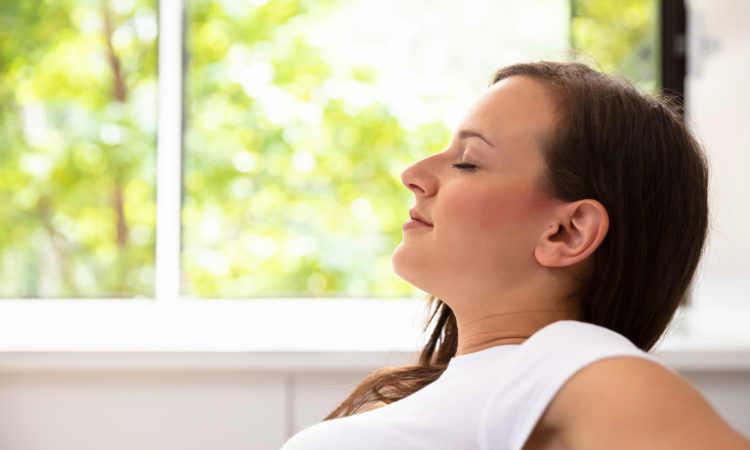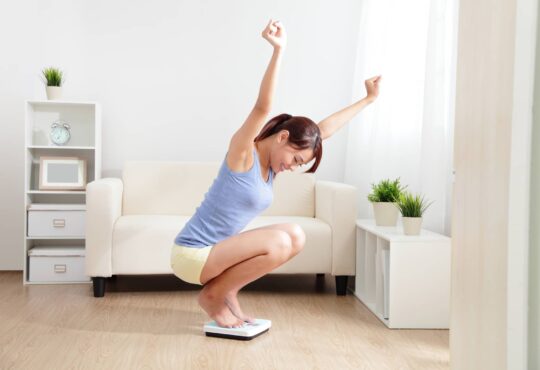
I’ve written about the importance of breathing through your nose and of expanding your lung capacity – but what about the air itself?
Sick Building Syndrome became famous in the 1970’s thanks to the drive to save energy by tightening up homes, office buildings and schools.
That, plus the advent of widespread central air conditioning began giving people more respiratory problems.
Poor indoor air quality lowers your energy, your concentration and your cognitive functioning.
If you’ve ever felt exhausted, unable to focus and just plain stupid in the afternoon, it’s probably due to a lack of clean, fresh air.
Improving air quality also also helps people with asthma and allergies.
Smoking bans help – I remember when I had to work through a thick haze of cigarette smoke thanks to family members.
But it’s not enough. People still smoke at home. And we must deal with air pollution, infectious diseases spread by aerosol droplets, fumes from new plastic furniture, cleaners and ash from forest fires.
The Industry Ideal
For ideal indoor air health, a room should go through 6 ACH.
ACH is Air Changes per Hour.
So, 6 ACH means the air you’re breathing in turns over once every 10 minutes.
Building codes may require only 3 ACH – yet most schools are rated only 1.5 ACH.
The average home is just 1/2 ACH.
What You Can Do
1. Let fresh air in.
Even when it’s cold or hot outside, raise your windows an inch or two.
For mechanical HVAC systems, open the outside dampers.
When you’re in a car, lower your window a few inches when you are not in heavy traffic.
2. For recirculated air – use a high-efficiency filter.
These filters are measured by Minimum Efficiency Reporting Value.
MERV 13 removes 80% of air particles, and so it’s the minimum you should invest in.
3. For smaller places, such as rooms in your home, use a portable air purifier.
As with many things, you can find portable air purifiers in a wide range of prices.
You don’t need all the fancy and expensive bells and whistles.
UV light can kill viruses, but, according to experts, isn’t needed at home.
Ionization can actually be dangerous. That’s because it can create ozone, formaldehyde and ultrafine particles – all of which are themselves respiratory hazards.
You need just one thing – a HEPA filter.
HEPA stands for High Efficiency Particulate Air.
The portable air purifier must have a fan that blows your room’s air through the HEPA filter.
Look for one that has a Clean Air Delivery Rate (CADR) over 300.
CADR is measured by cubic feet per minute. Over 300 should be enough to make sure your room’s ACH is 5 or 6.
If your room is large, it may need a higher CADR, or more than one air purifier.
To make sure, measure your room (length X width X height = total cubic feet) and look for online calculators.
Another Key Factor – Humidity
One reason why respiratory diseases are more common during the winter months is that colder air is drier than summer air.
The optimal level of humidity is 40% to 60%. Yet, during winter, much of the air we breathe drops to 20% or less.
Aerosol droplets containing viruses do travel farther in dry air than in humid air, and survive for longer, so that contributes to the disease problem.
Also, the cilia which protect your lungs and mucous membranes from particles and infectious agents move more slowly in dry air. Therefore, they’re less able to protect your airways from harmful substances.
Unfortunately, humidifying air can be difficult to do well, especially in large buildings, because you have to deal with water.
But a portable humidifier can improve the quality of your indoor home air.
A Great Measure of Air Quality
That’s the concentration of carbon dioxide, or CO2.
CO2 displaces oxygen and nitrogen in the air, making it stuffy and less healthy. You need sufficient oxygen for optimal health and energy.
You send CO2 into the air every time your exhale because it’s a byproduct of your body’s metabolism.
It also seeps into homes from the soil, caused by the decomposition of organic material in the ground.
You can buy carbon dioxide monitors for a reasonable price.
If the CO2 in your air is over 1,000 ppm (parts per million), that’s too high.
You may need to open a window to let in fresh air.
If your air persistently goes to 2,000 ppm or more, you may need to call a furnace repair person to adjust your HVAC system.
Avoid Disease, Increase Work Performance and Feel Better
Harvard Professor Joseph Allen and his team have studied the effects of air quality on people in an office.
They carried out cognitive tests on the employees while – without telling them – changing levels of CO2 and ventilation.
They found the employees did significantly better on cognitive tests when the air they were breathing had low levels of CO2 and high levels of ventilation (CPH).
Employers would actual improve workplace performance and efficiency – and probably lower the use of sick days off – if they’d invest in their workplace’s clean air.
Schools could also help children learn more and be healthier by improving the quality of the air they breathe.
And all of us should want to improve the quality of the air in our homes.
https://www.youtube.com/watch?v=OQ6DhgwgtGw
https://www.webmd.com/allergies/hepa-filters-for-allergies
https://www.healthline.com/health/negative-ions
https://www.dhs.wisconsin.gov/chemical/carbondioxide.htm







